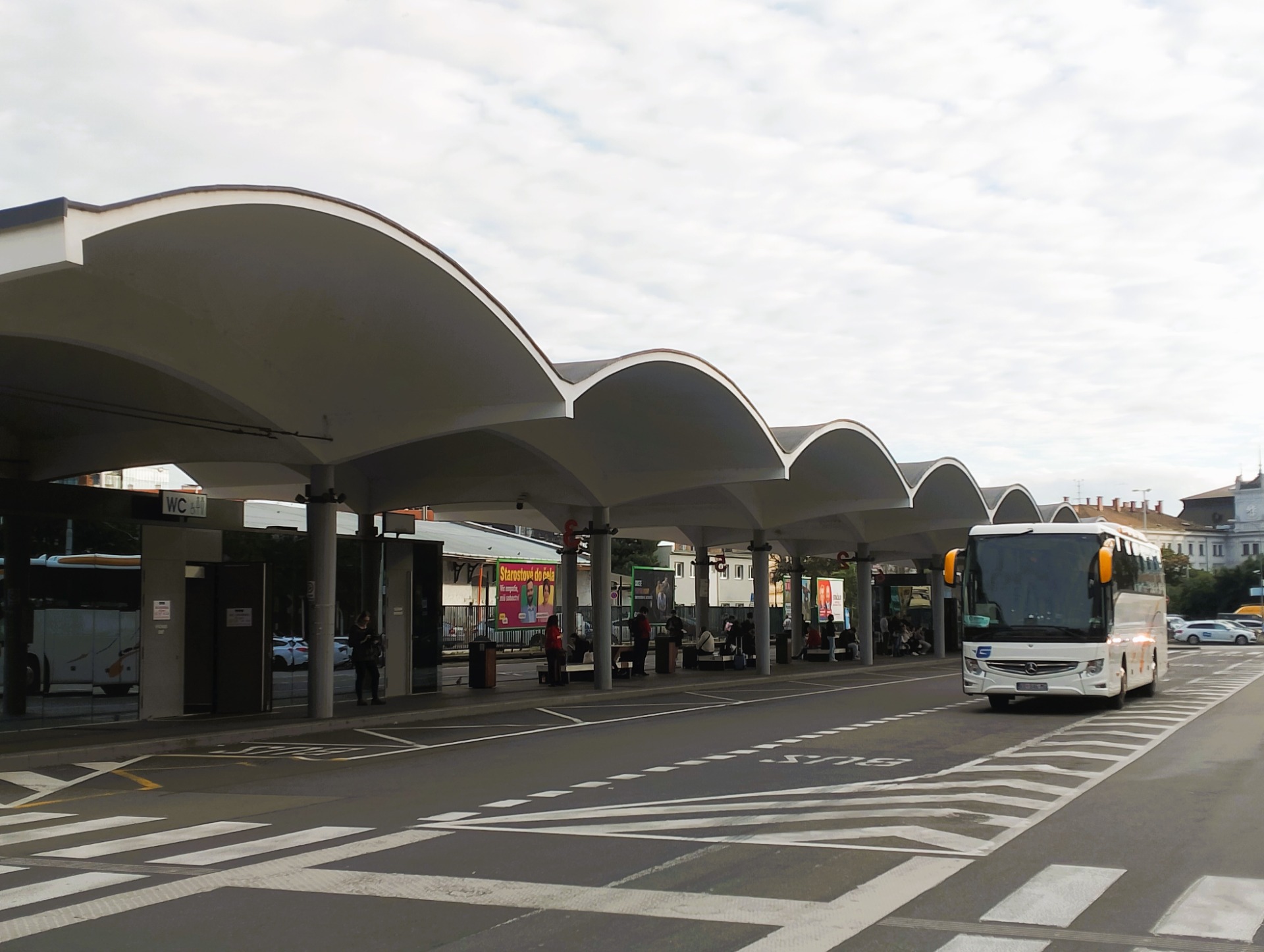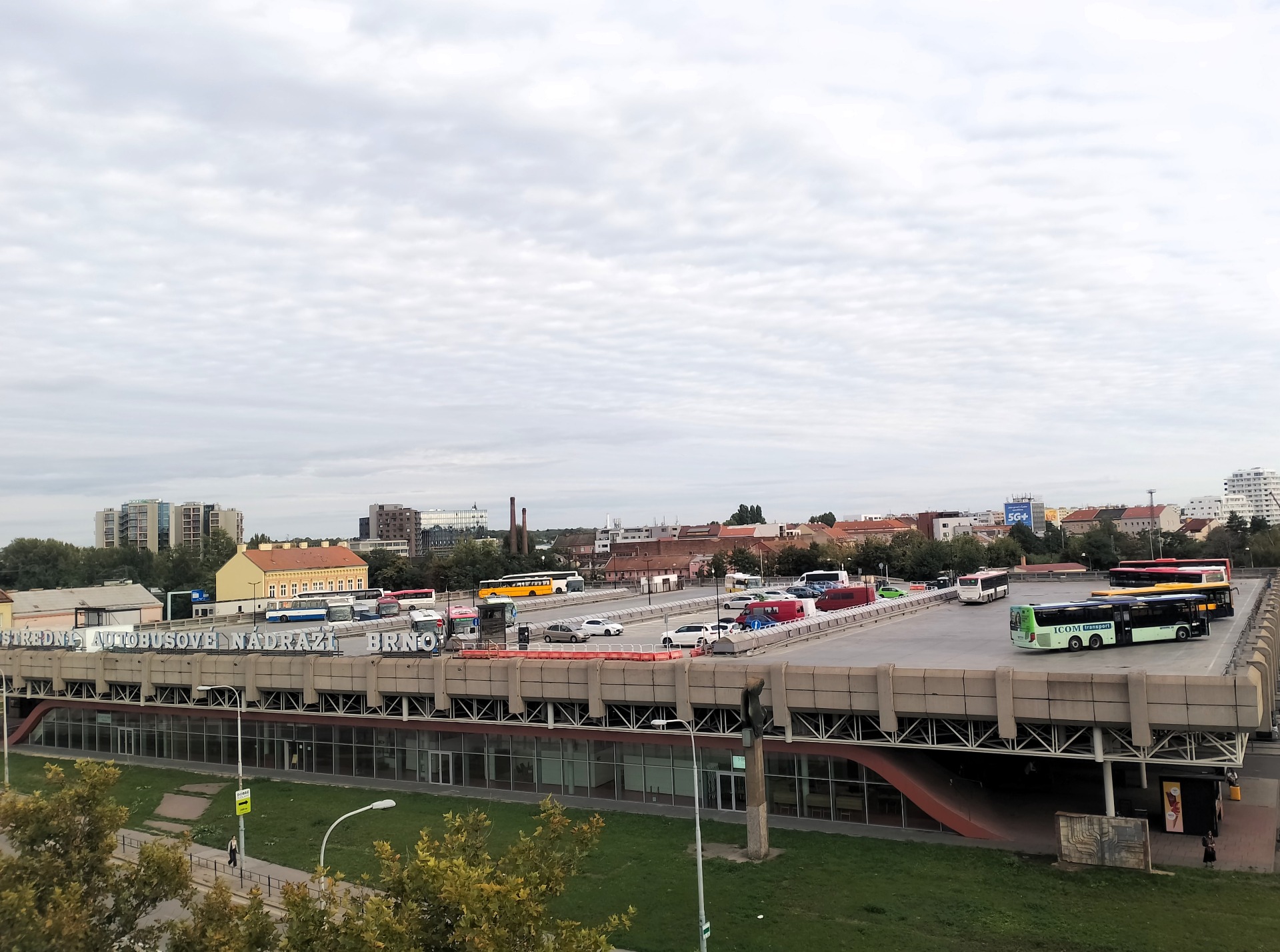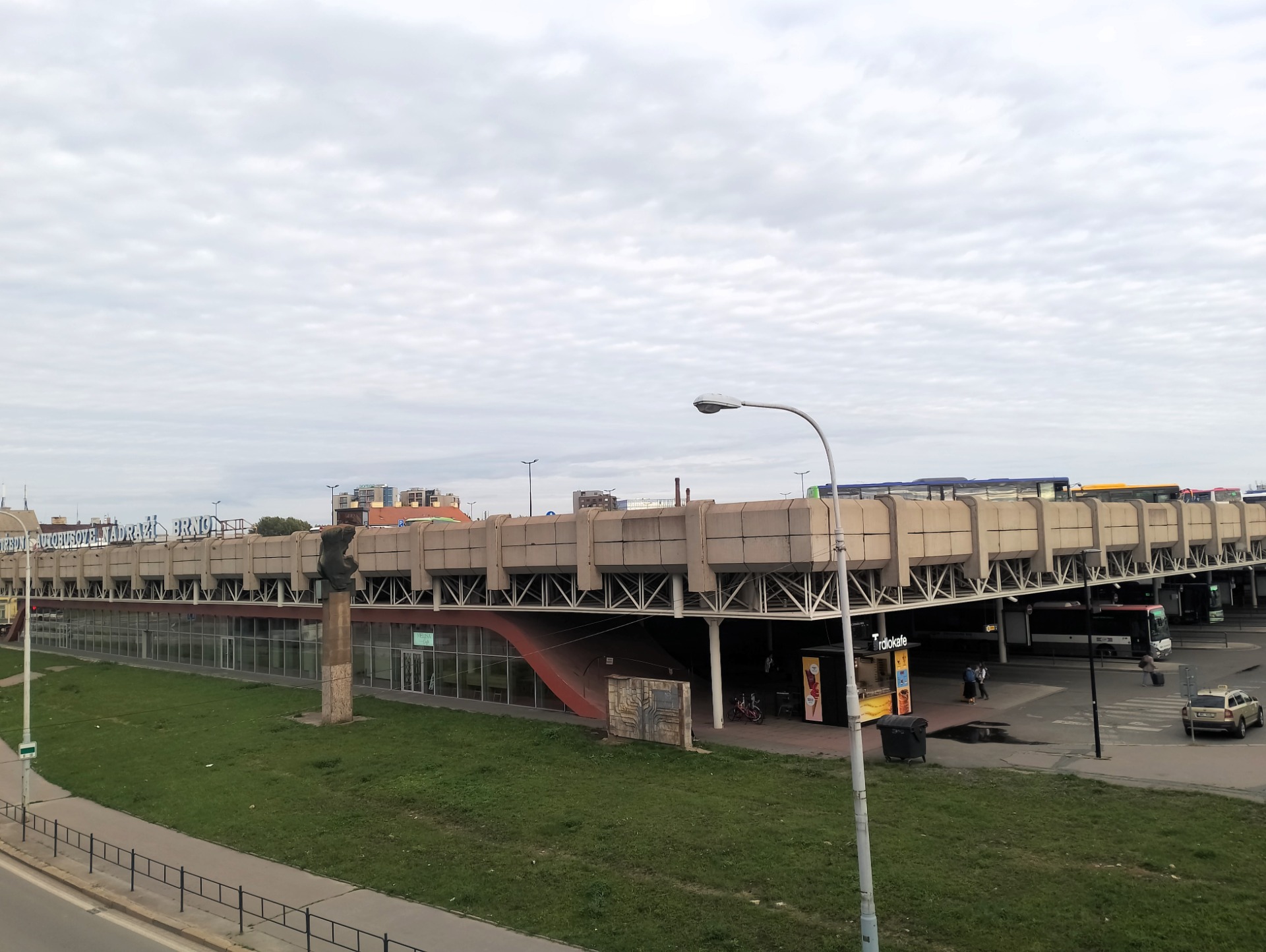Nádraží nejsou jen místem, kde cestující nastoupí, přestoupí nebo vystoupí z vlaku či autobusu. Jsou také první branou do města, místem, kde si turisté vytvářejí první dojem.
V tomto ohledu se Brno nemá čím chlubit. Vlakové nádraží je místem, kde se běžní lidé nezdržují víc než je nutné. Přednádražní prostor byl dokonce v anketě zvolen největší ostudou města. Jak si ale vedou brněnské autobusové stanice?
EN: Stations are more than just places where passengers board, change, or leave a train or bus. They are the city’s front door — the very first scene visitors step into, and the space where they form their first impressions.
In this respect, Brno has little to boast about. Its main railway station is a place where locals rarely linger, staying only as long as they must. The square in front was even voted, in a public survey, as the city’s greatest embarrassment. But what about the bus stations — how do they compare?

V Brně se nacházejí dvě hlavní autobusová nádraží. Přímo v centru města stojí více než stoletá funkcionalistická budova navržená architektem Bohuslavem Fuchsem. Jemná stavba, známá jako „Grand“ podle nedalekého secesního hotelu, má charakteristické oblouky, které poskytují úkryt před deštěm, a nabízí pouze deset nástupišť. Odtud nejčastěji odjíždějí autobusy společností RegioJet a FlixBus. Slabší stránkou je informační systém, k dispozici je jen několik laviček a malá čekárna s automatem na kávu a sušenky. V osmdesátých letech už kapacita tohoto nádraží nestačila, a proto bylo za vlakovým nádražím vybudováno Ústřední autobusové nádraží.
EN: Brno has two main bus stations. Right in the city centre stands a more than century-old functionalist building designed by architect Bohuslav Fuchs. This delicate structure, nicknamed “Grand” after the nearby Art Nouveau hotel, features graceful arches that offer shelter from the rain but provides only ten platforms. From here, coaches of RegioJet and FlixBus depart most often. The station’s weak points are its poor information system, the lack of seating, and a tiny waiting room equipped only with a vending machine for coffee and snacks. By the 1980s, the station’s capacity was no longer sufficient, and so the Central Bus Terminal was built just behind the railway station.

Brutalistní stavba Ústředního autobusového nádraží v Brně je vyhovující z hlediska kapacity i praktičnosti, po estetické stránce však působí mnohem hůře. Kovové sloupy nesou střechu, která cestující chrání před nepřízní počasí a zároveň slouží jako parkovací plocha pro autobusy. V sousední nevzhledné jednopodlažní budově se nachází dispečink, čekárna a restaurace. Při nedávné rekonstrukci byly přistavěny nové prostory s informačním centrem, další čekárnou a kavárnou. Zároveň došlo k opravě vozovek a chodníků na nástupních ostrůvcích, k nátěru kovových částí stavby a k výměně osvětlení. Díky těmto úpravám působí nádraží přece jen o něco lepším dojmem.
EN: The brutalist structure of Brno’s Central Bus Station is adequate in terms of capacity and practicality, but its aesthetic qualities are far less impressive. Metal columns support a roof that both shelters passengers from bad weather and serves as a parking area for buses. In an adjacent, rather unattractive single-storey building, there is a dispatch office, a waiting room, and a restaurant. During a recent renovation, new facilities were added, including an information centre, another waiting room, and a café. At the same time, the roads and pavements on the boarding platforms were repaired, the metal parts of the structure were repainted, and the lighting was replaced. Thanks to these improvements, the station now leaves a slightly better overall impression.


View this post on TravelFeed for the best experience.